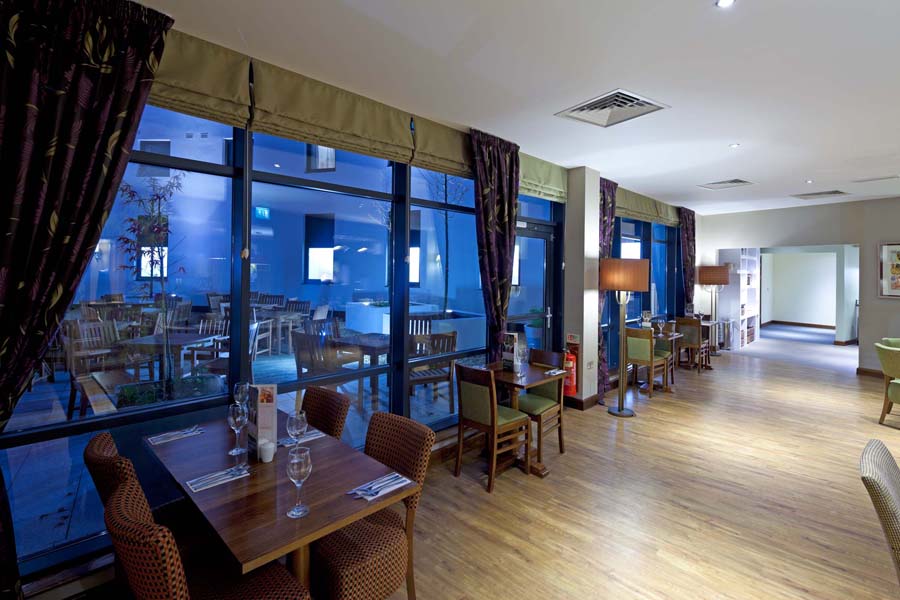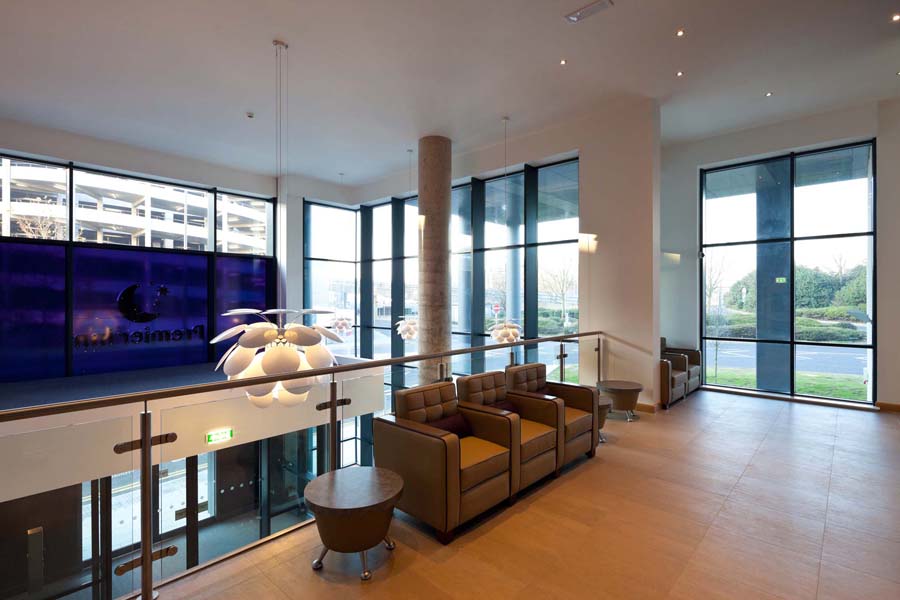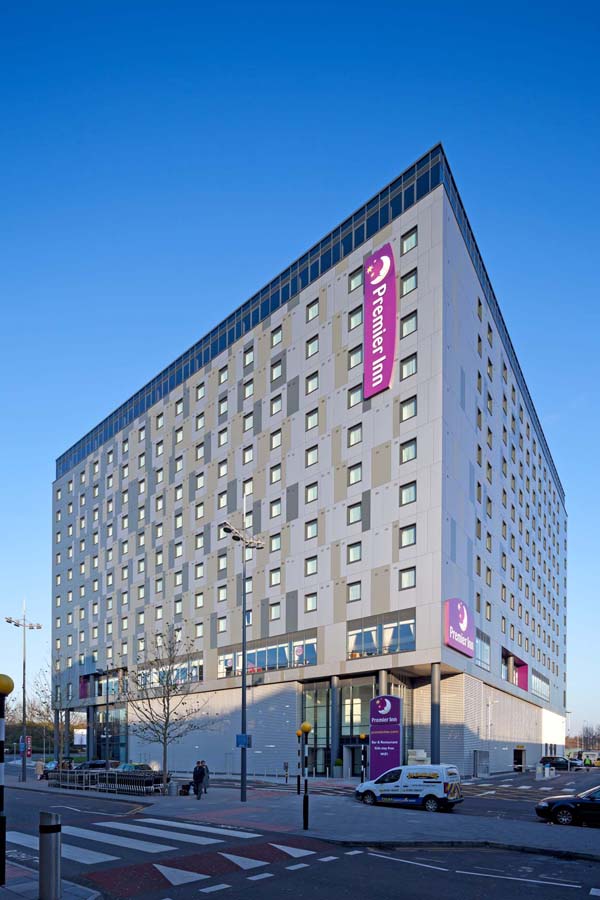
Most of us will be working from home at this time and communicating through meeting apps in order to progress what business we can. It is at these times we notice the sensitivities of the microphones on our devises and hear the sounds that we filter out during our normal home life. When specifiers design facades for new or refurbished properties in our towns and cities, there are a number of factors to put into the design mix and acoustics are becoming crucial both in workplace and residential properties.
Different types of noise can raise stress levels in the body, releasing a number of different stress hormones and, as the amount of stress hormones in the body increases, the heart rate, blood pressure and blood sugar levels increase. Excessive levels of these stress hormones in the body are harmful, and should the noise be sustained, or repeated day after day, this exposure will be seriously affecting health and wellbeing of building occupants.
Cities are becoming noisier with increasing traffic and in many building locations close to railway lines, noisy pubs, clubs, noisy neighbours and/or flight paths. There are street designs which include special street furniture and planting to help reduce airborne noise but eventually, the noise will try to penetrate the building structure through the building facade.
Windows or areas of glazing are the most susceptible parts of the facade as they are generally the ‘lightest’ of materials used. Sound attenuation is best achieved by utilising unbroken ‘mass’ of material, such as a brick wall. The greater the mass, the greater the sound attenuation.
Depending on the time of day, noise levels of road traffic can vary between 45-70+ decibels and this is just over the sound level that is seen to be 'healthy'.

Old, draughty single glazed windows with poor or non-existent weather seals are the poorest performing windows when it comes to sound attenuation. Even the smallest of gaps which allows a flow of air through the window will allow noise to penetrate the facade. So, the more airtight the window, the greater the sound reduction. Typically a well sealed single glazed window will offer a -30dB reduction in sound transmission, or what is known as ‘attenuation’. In busy built up areas single glazing is now seen as inadequate.
For every 10dB reduction in the noise level achieved, the human ear perceives this as halving the volume.
Glazing plays the biggest part in sound attenuation, double glazing helps, especially if the glass used is of differing thickness. Most materials at a given thickness will ‘resonate’ at certain frequencies and allow some of those frequencies through, using a different thickness ensures what passes through one will not pass through the other. A well designed triple glazed unit with differing air spaces and glass thickness, will perform even better. Acoustic laminates used in laminated glass are specially designed to minimise sound transmission and a well designed unit can achieve up to -45dB sound attenuation.
The use of triple seals further improve sound reduction and high thermal performance systems with wide high performance centre seals with further attenuate sound around a high performance glazed unit.
Regarding specification, Building Regulations, Part E, ‘Resistance to the passage of sound’ should be consulted as well as a number of standards that are currently in place. Depending on the building there are also specific and differing requirements laid down for the likes schools, hospitals and offices, to name a few. Some company chains, such as Premier Inn, have their own acoustic requirements. When specifying BREEAM rated projects, there are points than can also be awarded for compliance in certain circumstances.
Sound attenuation is also a little more complex in application and specifiers need to be aware that a change in window size can have an impact on ‘expected’ attenuation levels. Furthermore, attenuation is not linear, transmission of frequencies may mean that at one level of frequency, in a given window specification, sound is well attenuated whilst at another frequency, sound attenuation will be less. Knowing what frequencies to specify too is crucial in getting the installation best specified for the client.
Whilst ensuring airtight window systems to increase sound attenuation, these can be provided with ‘glazed-in’ or ‘in-frame’ acoustic ventilators which consist of baffles and acoustic absorbing materials to allow ventilation but with attenuated noise transmission. Acoustic ventilators may not offer the level of attenuation required and this is where an alternative mechanical ventilation provision should be considered. Depending of the configuration and specification of the design of windows or curtain wall required, our Aluprof design team can assist in the best options to be specified.
Where prime windows need to remain in place, for example in listed facades, then the option to install a secondary window system will offer a good solution. Using spacings of 100mm to 150mm between these windows including the inside reveal lined with acoustic absorbing material will offer very high levels of sound attenuation.
Flanking sound transmission is quite a talking point at the moment in the industry. On almost every acoustic assessment when there is a continuous curtain wall, sound can travel through the facade to other floors, the reason for this is that the box will allow sound to travel unless it is broken per floor. Provisions can be incorporated such as an acoustic insert, multiple transoms can also be used to allow the sound to dissipate. Careful design is required to allow movement of the curtain wall system whilst ensuring that sound does not travel between compartments or floors of the building. Curtain wall also has the ability to transmit impact sound across compartments as well as airborne sound and selecting suitable methods of construction will improve attenuation.
Whilst there is no one fix for all conditions, our design team in London and at our head office here in Altrincham can offer advice on how to tackle sound attenuation in both new and existing buildings. With one of the widest ranges of aluminium systems available in the UK we can offer you a bespoke design to meet both thermal and sound attenuation requirements.
Since setting up the Aluprof Project Office at the Business Design Centre in London, the company has rapidly grown their specification influence in the UK with their high performance architectural aluminium systems. Further expansion of the companies headquarters in Altrincham now provides specifiers with meeting facilities and an extensive showroom of commercial systems to view. With overseas growth across Europe spreading into the Middle East and firm roots already in the East of the USA, the company is becoming a global player in facade supply. Further information is available on the companies website at aluprof.co.uk or direct from their UK office in Altrincham on 0161 941 4005.















